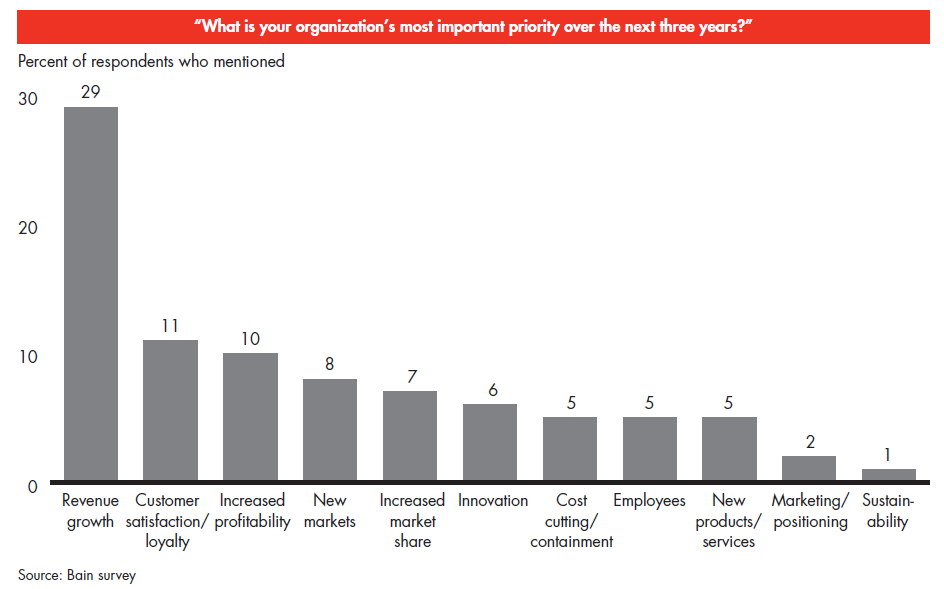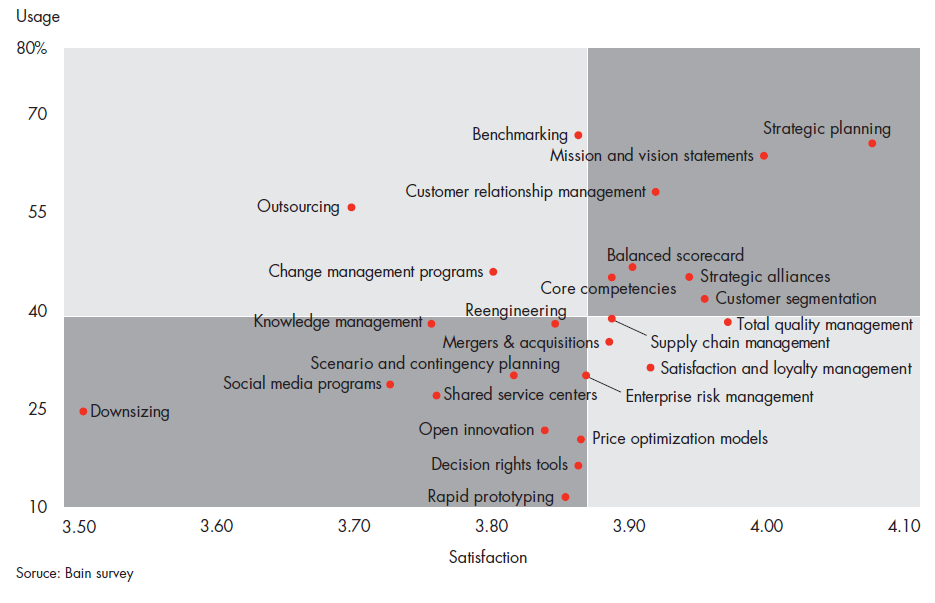Bain & Co conducts a survey every few years on how executives use management tools. Unsurprisingly, these are the management tool that management consultants often use when coaching, prodding, and helping executive think about their business. If you want to learn more about any of the following 25 management tools, please download the Bain & Co Management Tools and Trends 2011 (76 pages). List of management tools – a good reference – at the least.
- Balanced scorecard
- Benchmarking
- Business process re-engineering
- Change management programs
- Core competencies
- Customer relationship management
- Customer segmentation
- Decision rights tools
- Downsizing
- Enterprise risk management
- Knowledge management
- Mergers and acquisitions
- Mission and vision statements
- Open innovation
- Outsourcing
- Price optimization models
- Rapid prototyping
- Satisfaction and loyalty management
- Scenario and contingency planning
- Shared service centers
- Social media programs
- Strategic alliances
- Strategic planning
- Supply chain management
- Total quality management
Looking at this expansive list, I know that large Fortune 100 companies use all of these management tools. How could P&G not use supply chain management or pricing optimization? To me, it is more of a barometer of management trends, fads and perceptions. Nonetheless, it is useful to read and instructive. And free.
Darrell Rigby
It is written by Darrell Rigby, a long-time partner at Bain & Co. He authored a recent book (have not read yet) called Winning in Turbulence (affiliate link). Good interview with him on Harvard Business Review Podcast here.
There is also a 16 page executive brief here. Some of the takeaways:
- 89% said that “culture is as important as strategy”
- 81% said “ability to change” is a competitive advantage
- 68% said “taking care of customers and employees” should come before shareholders
Revenue growth = #1 priority
From the 1,100 executives who responded to the 2011 survey, revenue growth was the #1 priority, followed by customer satisfaction / loyalty.
Benchmarking used by 60%+ of executives
Look at the graphic below. Bain uses a 2×2 matrix to compare the usage of a tool with overall satisfaction. In the top right box, you can find that strategic planning was commonly used and considered useful. In contrast, benchmarking was used as often, but not as satisfactory.


